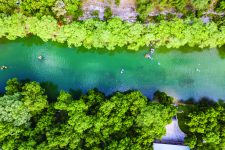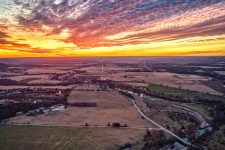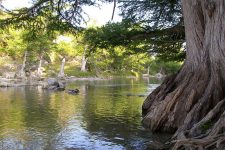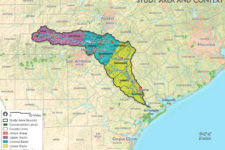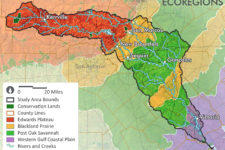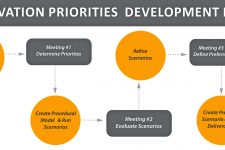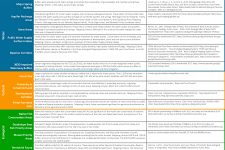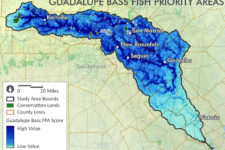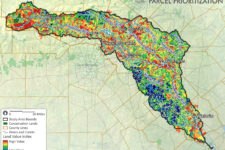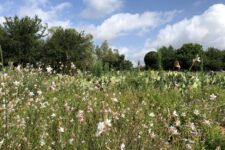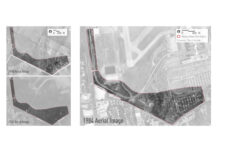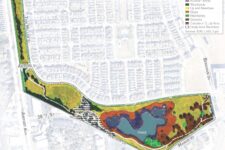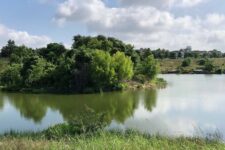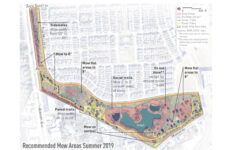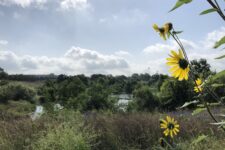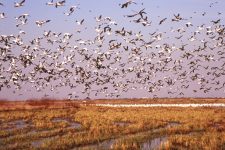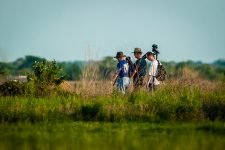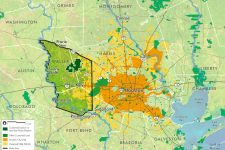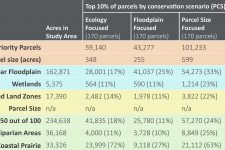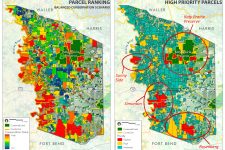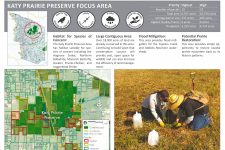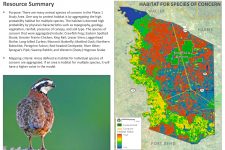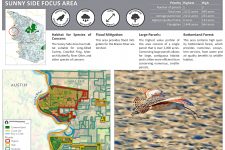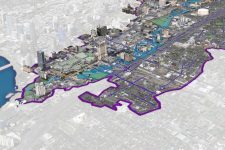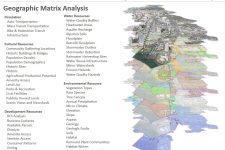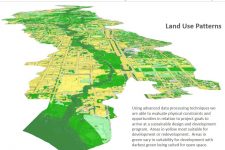Guadalupe River Basin Strategic Conservation Plan
Siglo Group was commissioned by the Meadows Center for Water and the Environment to build upon their legacy of conservation work by identifying new opportunities to protect and conserve water resources throughout Texas. This work was completed with support from Texas Department of Parks and Wildlife (TPWD).
This study assessed over 3 million acres of land in the Guadalupe Basin. The project builds on successful stakeholder driven conservation planning and conservation action processes completed in watersheds throughout Texas, the great plains, and the western United States. An initial stakeholder driven basin-wide conservation planning process using a GIS procedural model was followed by the creation of a 5-year conservation action plan that included over thirty specific projects throughout the watershed. In addition, the stakeholder process integrated governmental interest with those of non-profits and land trusts—making for results that better reflect the many interest of conservation throughout the basin.
To direct conservation easement and fee simple acquisition in the coming decade, the 10% of the basin with highest conservation values was identified. The procedural model and stakeholder input included variables associated with water, ecological, and cultural resources with a strong focus on Guadalupe Bass habitat—a key conservation species in the basin. Other conservation resources included freshwater mussels, flood mitigation lands, lands adjacent to existing open space, ranchlands, areas threatened by development, and riparian corridors.
These results are being used to galvanize diverse partnerships with the aim of conserving more land in the study area. Stakeholder meetings have already taken place and have included TPWD, U.S. Fish and Wildlife Service, Texas State University, Southwest Research Institute, Greater Edwards Aquifer Alliance, City of San Antonio, City of New Braunfels, Comal County Conservation Alliance, Upper Guadalupe River Authority, Edwards Aquifer Authority, Great Springs Project, Guadalupe-Blanco River Authority, and San Antonio Bay Partnership.
Mueller Southwest Greenway Prairie Evaluation
Siglo Group was commissioned by RVi Planning & Landscape Architecture to evaluate the successes and opportunities of the Mueller Prairie, which started as an effort to transform a piece of urban land into a functioning Blackland Prairie. The evaluation included a plant survey, review of wildlife sightings, an invasive plant species inventory, and assessment of erosion issues. This process highlighted the health of native plant populations, while incorporating the park user experience within the prairie system.
The assessment concluded that invasive species were a major threat to the intent and integrity of the original prairie design. Following installation, there was a steep decline in the original seeded and planted material and a simultaneous increase in invasive plant species dominance. This was attributed to numerous factors, which included weather conditions, drought, lack of an adaptive management approach, and the reality that an invasive seed bank is ever-present in urban systems.
Immediate next steps recommended in this assessment included the implementation of invasive species management, additional plantings, restoration of small areas dominated by King Ranch bluestem and Bermudagrass, and formalization of eroded social trails. The land manager began the process of integrating these recommendations into their management plan as of the summer of 2019.
Katy Prairie Conservancy Strategic Conservation Prioritization
Siglo Group was commissioned by the Katy Prairie Conservancy to support their mission of protecting a sustainable portion of the Katy Prairie for the benefit of its wildlife and all Texans forever. To meet this goal, Siglo Group conducted an analysis and stakeholder engagement to identify conservation priorities in the Katy Prairie associated with water, ecological, and cultural resources through the use of geographic information systems.
The study assessed 454,196 acres on the western edge of the Houston Metropolitan Area. Building on best conservation planning practices, including those used in other areas such as the San Antonio Edwards Aquifer Protection Program, the conservation planning process for this project was designed to identify the unique threats and conservation resources of the study area, while incorporating the needs and desires of KPC management and stakeholders. Stakeholders participated in two working meetings and a final docement review. The initial meeting introduced stakeholders to the process and allowed for their input on conservation resources to be used in the planning process. The second meeting showed the outcomes of different conservation resource configurations and gathered input on preferred conservation areas from stakeholders. KPC staff participated in all aspects of the project and gave direction on the process at all key stages. KPC requested four final conservation scenarios, each focusing on different resource sets— ecological, floodplain, parcel size, and “balanced”.
Within the study area, 62 parcels totaling 24,177 acres were identified as highest priority for conservation and an additional 135 parcels totaling 51,416 acres were identified as high priority. Using this tool, KPC can focus its efforts to protect lands that provide the greatest number of services for both the human and natural communities of the Katy Prairie area, while working towards their mission of protecting this unique ecosystem for all Texans.
Waller Creek Competition
Siglo Group had the honor of participating on the Lake|Flato, Turenscape Team in the international Waller Creek Conservancy Design Competition. We were one of four teams that were shortlisted and asked to create preliminary designs for this amazing urban creek area. Siglo aligned well philosophically with the lead firms, who focus on integrating design into the natural environment. Siglo supplied baseline information and analysis to the team’s 10 consultant firms and helped create the conceptual framework for the team’s “whole watershed” approach.

